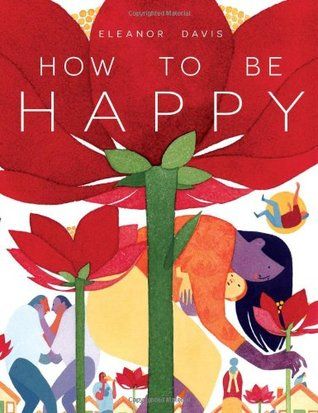"How To Be Happy" collects some of some of Eleanor Davis' most important and moving work in one gorgeous hardcover by Fantagraphics. Davis, long known for her insightful and emotionally gutting short stories, brings together a strong selection that will leave readers aching for more.
There's a haunting and almost disturbing quality to Davis' work -- in both idea and execution -- that cuts to the heart of very serious subjects with a hypnotic ruthlessness. Most comic collections have obvious strengths and weaknesses, but "How To Be Happy" is universally strong. My sole complaint as a fan of Davis' work is the absence of a few pieces -- most notably "Hobo Bones," a brilliant piece of work that thematically is a perfect fit for this collection -- but wanting more is hardly a criticism of the work presented.
So vast is Davis' talent and approach to storytelling that a casual flip through the book might lead readers to believe this was a collection by many creators, not just one. It's simply all the fantastic sides of Davis on stunning display. Stories range from meticulously crafted (but simple) line drawings detailing the skinning of a fox to the lovingly illustrated sepia toned washes of "Seven Sacks" and the controlled saturated colors of "Nita Goes Home." Like a chameleon, Davis draws and approaches story in a hundred different ways. She tackles all manner of subjects and finds the perfect way to express each of them, but the beating heart is what links them all. There's an emotional resonance to these short stories that few creators can manage in twice the page time.
Structure-wise, longer more traditionally narrative stories are punctuated by vignettes and shorter stories with a looser and more experimental structure and this is a wonderful way to experience Davis' work, which begs for reflection between stories. Davis has an effortless way of distilling its message very personally to the reader. What you bring to the table invariably determines what you take away. For me, the entirely silent (save sound effects) "Stick and String" speaks powerfully about love, desire, domestication, contentment and how all those things pull mercilessly at one another. At the same time, "Seven Sacks" never ceases to leave me quaking in my boots about the idea of profiting off of others' misery or standing idly by while atrocities are committed, as well as the nature of truth and it all being entirely a matter of perspective. A simple two page story about a woman trying to talk to her friend about her struggle with depression is a stark and painfully honest look at narcissism and our ability to push away real problems in favor of easier solutions.
Davis' work has a take-no-prisoners approach to storytelling that will generally leave you gasping for more, or for mercy. At the same time her work is blissfully free of judgment. In "How To Be Happy," Davis doesn't seek to teach a cliche lesson or shame anyone, she's simply grasping for the truth, and reading her work will leave you grasping for it too.

